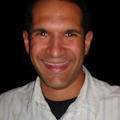Assistant Chief of Operations Larry Schultz was joined by several colleagues to discuss what was learned from the Oct. 29, 2007 4th Street fire that seriously injured four firefighters.
Schultz said that although the department's Standard Operating Guidelines are in place to prevent such incidents, mistakes were made that day that led the hospitalization of his colleagues.
"In spite of all of these things, you're still going to have problems," he said. "It's all about how you respond to them."
Immediately following the incident, Chief Dennis Rubin established goals and objectives including training needs, an investigation and a third party independent review.
Watch Training Video Read Internal Report Read NIOSH Report
Schultz emphasized that in a city like D.C. with a oversaturated media market, the handling of public information is critical.
"Either you will control the message or they will control the message," he said.
Just two days after the incident, Rubin ordered the training and a presentation to be presented to the entire department.
Schultz said that it helped put an end to all of the rumors. Firefighters were given all of the known facts of the fire and were given a walkthrough. All employees were given the training within one week.
He said that often times, fingers are pointed following such an incident and "can destroy a department," making an outside investigation necessary. NIOSH's 35-page report highlights recommendations all departments can follow.
While the NIOSH report was released just over a year after the incident occurred, it took almost two years for the department's internal report to be released. While NIOSH covered broader issues, the DCFD report covered the specifics and more than 100 firefighters were interviewed.
"Everyone needed to be interviewed," Schultz said. "You owe it to them to get their side of the story."
After the report was completed, he sat down with all four firefighter from Engine 4 that were injured that day -- Sgt. Michael LaCore and firefighters Douglas Donnelly, Kenneth Humphries, and Charlie Shyab -- and read it to them to get their feedback.
"It was important to sit down with them first" before it was released, he said.
Deputy Chief of Safety and Wellness William Flint compiled recommendations from several near miss and LODD reports done by the department over the years following the 4th Street fire.
"At the end of the day I wanted to make sure that we had improved," he said.
Through his research, he came up with 137 recommendations that were made and was able to narrow down key areas the department needed to focus on.
"A lot of these changes can't be done by the stroke of a pen. You have to work toward the incrementally," he said. "It takes education of everybody to make sure we are pushing forward with remembering these incidents."
About the Author
Paul Peluso
Staff Writer
Paul Peluso is a Firehouse.com staff writer and has worked for the Web site since 2006. Previously, he worked as a reporter for several community newspapers located in the suburbs of Baltimore, Md. Since joining the newsteam, Paul has covered various fire service issues including fire sprinklers, grants, line of duty deaths and technology. While he started out at the Beltsville, Md. office, he has since moved to Florida where he works out of his home office in Tampa.
